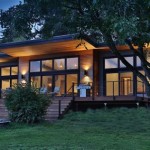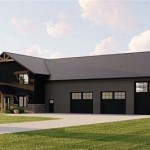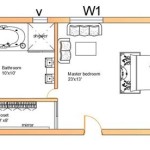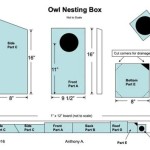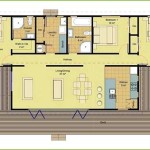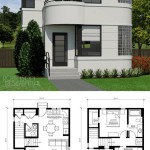Exploring One Bedroom Apartment Floor Plans: Maximizing Space and Functionality
One bedroom apartment floor plans represent a significant portion of the rental and ownership market, appealing to single individuals, young couples, and those seeking a compact and manageable living space. Understanding the nuances of these floor plans is crucial for renters and buyers alike, enabling them to effectively evaluate suitability for their lifestyle and needs. This article will delve into the various aspects of one-bedroom apartment floor plans, highlighting key considerations for optimizing space, functionality, and overall livability.
The appeal of a one-bedroom apartment lies in its affordability, convenience, and relatively low maintenance requirements compared to larger dwellings. These units typically consist of a living room, a separate bedroom, a kitchen, and a bathroom. However, the arrangement, size, and interconnectedness of these spaces can vary significantly, leading to diverse floor plan designs. Factors such as building architecture, location, and target demographic influence the specific layout and available amenities.
Understanding Common One Bedroom Apartment Floor Plan Types
One bedroom apartments can be categorized into several common floor plan types based on the configuration of the main living areas. Recognition of these layouts allows for a more informed approach to evaluating potential residences.
The most basic layout features a rectangular or square shape, with the main living areas typically arranged linearly. The entrance often leads directly into the living room, with the kitchen situated along one wall, sometimes partially separated by a breakfast bar or peninsula. The bedroom is usually located off the living room or a short hallway, ensuring some degree of privacy. The bathroom is commonly adjacent to the bedroom or positioned closer to the entrance for easy access from the living area. This configuration is generally straightforward and efficient but may lack distinct separation between living and sleeping spaces.
Other floor plans prioritize an open-concept design, blurring the lines between the living room, dining area, and kitchen. This approach aims to maximize the perceived space and create a more social atmosphere. The kitchen is often integrated into the living room as a galley or L-shaped arrangement, with a countertop serving as a casual dining area. The bedroom remains a separate, enclosed space, accessed via a door from the living area. While open-concept designs are popular for their modern aesthetic and spacious feel, they can present challenges in terms of noise control and privacy separation.
Loft-style one-bedroom apartments feature high ceilings, exposed brick, and large windows, often converted from former industrial buildings. These units typically have an open floor plan on the main level, with the bedroom located on a mezzanine or raised platform overlooking the living area. Loft apartments offer a unique architectural character and abundant natural light but may require creative strategies for spatial organization and sound dampening.
Another less common, but still existent, floor plan design is the split bedroom plan. While more commonly seen in larger apartments, some one-bedroom versions exist. In this arrangement, the living area acts as a buffer separating the bedroom from other parts of the apartment. This can be beneficial for those who value increased privacy and reduced noise transfer to the sleeping area.
Optimizing Space Utilization in One Bedroom Apartments
Given the inherent limitations of space in one bedroom apartments, effective space utilization is paramount. Strategic furniture selection, clever storage solutions, and mindful organization can significantly enhance the livability and functionality of these units.
Multifunctional furniture serves as a cornerstone of space-saving design. Sofa beds, convertible coffee tables, and storage ottomans offer dual purposes, maximizing the utility of limited space. Wall-mounted shelves and floating desks free up floor space, creating a more open and airy feel. Vertical storage solutions, such as bookshelves that reach the ceiling, capitalize on unused vertical space, providing ample room for books, decorative items, and other belongings. Utilizing furniture with built-in storage options, like beds with drawers underneath, helps declutter the visible areas of the apartment.
Effective organization is equally crucial. Implementing a system for managing belongings and minimizing clutter prevents the apartment from feeling cramped and overwhelming. Regular purging of unwanted items and the strategic use of storage containers help maintain order and maximize available space. Utilizing vertical space in closets with tiered shelves and hanging organizers can nearly double the usable storage in those areas. Over-the-door organizers in bathrooms and kitchens provide extra storage for toiletries, cleaning supplies, and other small items.
Lighting plays a significant role in creating the illusion of spaciousness. Maximizing natural light by keeping windows unobstructed and utilizing sheer curtains allows sunlight to flood the apartment, making it feel brighter and more open. Layered lighting, including ambient lighting, task lighting, and accent lighting, can further enhance the visual appeal and functionality of the space. Mirrors strategically placed throughout the apartment reflect light and create the perception of greater depth.
Furthermore, consider the positioning of furniture. Avoiding blocking pathways and ensuring easy flow throughout the apartment makes navigation easier and prevents the space from feeling cramped. Grouping furniture strategically creates distinct zones for living, dining, and working, even within a limited area.
Key Considerations When Selecting a One Bedroom Apartment Floor Plan
Choosing the right one-bedroom apartment floor plan involves careful evaluation of individual needs, lifestyle, and priorities. Factors such as the size of the apartment, the layout of the living spaces, the availability of storage, and the presence of amenities should all be considered.
The overall square footage of the apartment is a primary consideration. While all one-bedroom apartments are by definition smaller than multi-bedroom units, the specific size can vary considerably. Prospective renters or buyers should assess their furniture needs and lifestyle to determine whether the available space is adequate. A larger unit will generally offer more flexibility and comfort, while a smaller unit may be more affordable and easier to maintain. It's important to physically measure the rooms and compare them to the dimensions of existing furniture to ensure a comfortable fit.
The layout of the living spaces is equally important. The arrangement of the living room, kitchen, and bedroom should be conducive to the individual's lifestyle and preferences. Those who enjoy entertaining guests may prioritize an open-concept floor plan with a spacious living area, while those who value privacy and quiet may prefer a more compartmentalized layout with a clear separation between living and sleeping spaces. Careful consideration should be given to the flow of traffic within the apartment and the positioning of doors and windows.
Storage space is often a critical factor in one-bedroom apartments. Adequate closet space, kitchen cabinetry, and other storage options are essential for maintaining a clutter-free and organized living environment. Evaluate the amount of storage space provided and consider whether additional storage solutions, such as shelving units or storage bins, will be necessary. The availability of on-site storage units is another factor to consider, particularly for those with items that are not used regularly but still need to be stored.
Finally, the location of the apartment within the building and the proximity to amenities should also be taken into account. Consider the noise levels associated with different locations within the building, such as proximity to elevators, stairwells, or common areas. Evaluate the accessibility of amenities such as laundry facilities, fitness centers, and parking. The location of the apartment relative to public transportation and other essential services is also an important consideration.
In conclusion, selecting a one-bedroom apartment floor plan requires careful consideration of individual needs, lifestyle, and priorities. By understanding the various floor plan types, utilizing effective space-saving strategies, and evaluating key considerations such as size, layout, storage, and location, renters and buyers can make informed decisions that optimize their living experience.

1 Bedroom Apartment Plan Examples

1 Bedroom Apartment Plan Examples

Selecting The Right Apartment Floor Plans Apartments For In Heights Houston

One Bedroom Standard Floor Plan Apartments In M Massachusetts Princeton Crossing

Floor Plans The Central Apartments

Image From Http Www Homedecorlike Com Wp Content Uploads 2024 12 Small One Bedroom Garage Apartment Floor Plans Tiny House

One Bedroom Style 1e Vantage On The Park

Small One Bedroom Apartment Plans Tiny House Floor

Free Editable Apartment Floor Plans Edrawmax

Studio Apartment Plan Examples
Related Posts

